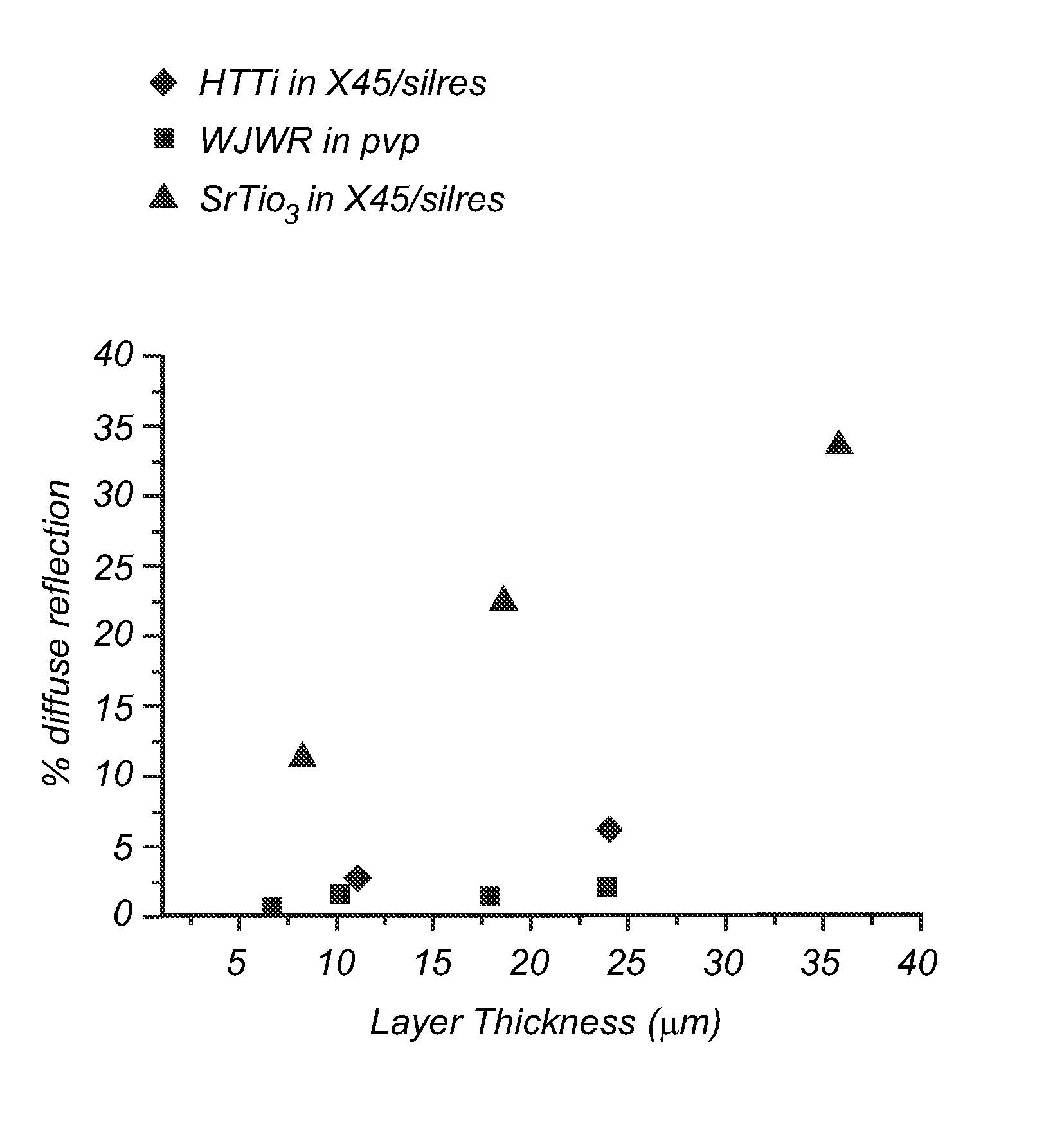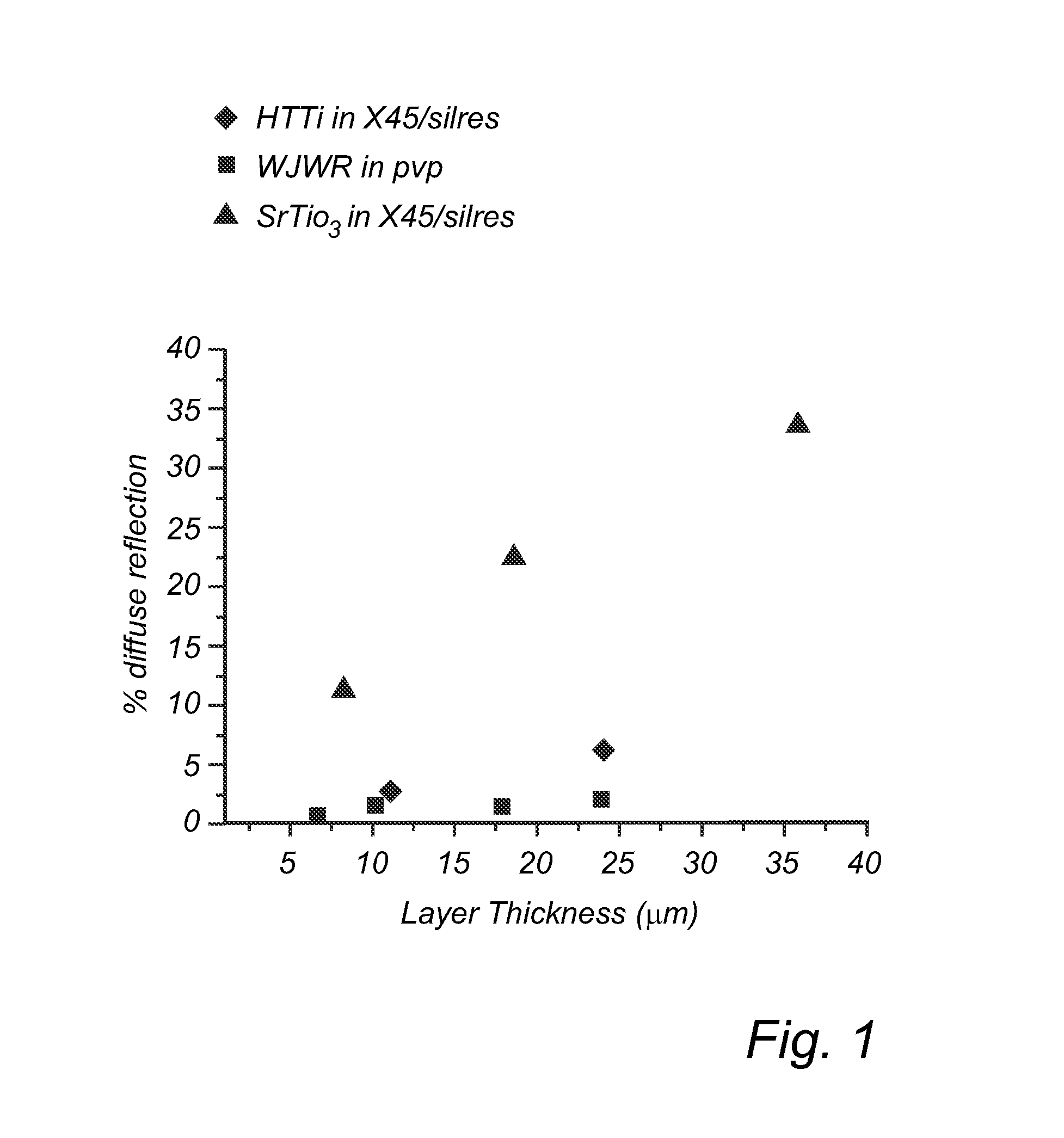Optical composition
- Summary
- Abstract
- Description
- Claims
- Application Information
AI Technical Summary
Benefits of technology
Problems solved by technology
Method used
Image
Examples
example 1a
Nanoparticle Stabilization for Preparation of an Optical Composition a
[0078]In a sample container, 3 g of nanoparticles comprising the oxide TiO2, 3 g of a silsesquioxane-based material (silres604, supplied by Wacker; or AB127719, supplied by ABCR) and 8 g of butylacetate were mixed.
[0079]Thereafter, the mixture was milled using zirconia milling balls. After milling, a particle size of 56 nm was measured using dynamic light scattering. The correlation function was indicative for a stable dispersion.
example 1b
Nanoparticle Stabilization for Preparation of an Optical Composition B
[0080]In a sample container, 6 g of nanoparticles comprising the oxide SrTiO3, 3 g of a silsesquioxane-based material (Silres604; Wacker, or AB127719) and 16 g of a solvent (butylacetate) were mixed.
[0081]Thereafter, the mixture was milled using zirconia milling balls. After milling, a particle size of 68 nm was measured using dynamic light scattering. The correlation function was indicative for a stable dispersion.
example 2
Preparation and Evaluation of an Optical Bonding Layers
[0082]Firstly, optical bonding layer liquids comprising the above optical compositions, respectively, were prepared. To prepare the liquid, a silsesquioxane-based material (Silres604; Wacker), a solvent (butylacetate) and nanoparticles (TiO2 or SrTiO3, respectively) were prepared in the way similar to the ones described in Example 1a and 1b. The nanoparticle matrix ratio was chosen such as to yield a refractive index of 1.75 at 450 nm (measured by a UV / Vis spectral ellipsometer).
[0083]Thereafter, the mixtures were further mixed with methyl / phenyl-based silicone resin (X45 / 717; Shin Etsu). Excess solvent (butyl acetate) was removed under reduced pressure.
[0084]Secondly, glass substrates were provided. Onto each substrate, a layer of the respective optical bonding layer liquid was dispensed. Various layer thicknesses were applied by conventional spincoating or blade coating.
[0085]Thereafter, the layers were subsequently cured; con...
PUM
| Property | Measurement | Unit |
|---|---|---|
| Particle size | aaaaa | aaaaa |
| Particle size | aaaaa | aaaaa |
| Composition | aaaaa | aaaaa |
Abstract
Description
Claims
Application Information
 Login to View More
Login to View More - R&D
- Intellectual Property
- Life Sciences
- Materials
- Tech Scout
- Unparalleled Data Quality
- Higher Quality Content
- 60% Fewer Hallucinations
Browse by: Latest US Patents, China's latest patents, Technical Efficacy Thesaurus, Application Domain, Technology Topic, Popular Technical Reports.
© 2025 PatSnap. All rights reserved.Legal|Privacy policy|Modern Slavery Act Transparency Statement|Sitemap|About US| Contact US: help@patsnap.com



